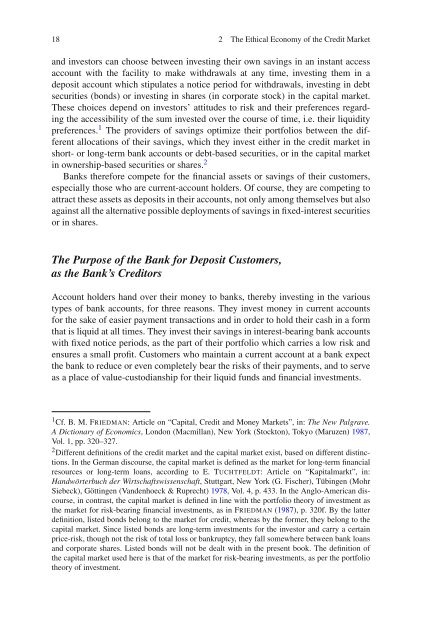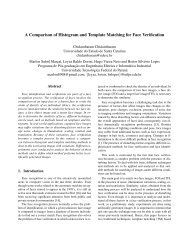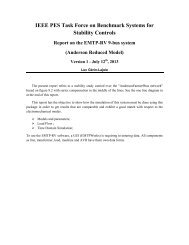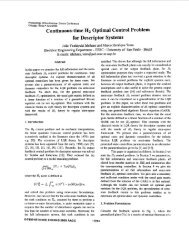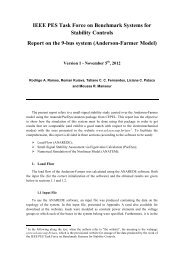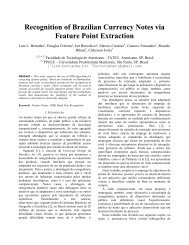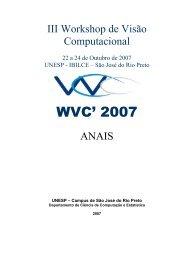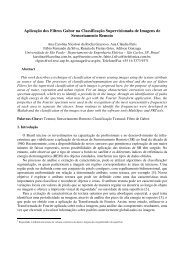The Ethics of Banking: Conclusions from the Financial Crisis (Issues ...
The Ethics of Banking: Conclusions from the Financial Crisis (Issues ...
The Ethics of Banking: Conclusions from the Financial Crisis (Issues ...
Create successful ePaper yourself
Turn your PDF publications into a flip-book with our unique Google optimized e-Paper software.
18 2 <strong>The</strong> Ethical Economy <strong>of</strong> <strong>the</strong> Credit Market<br />
and investors can choose between investing <strong>the</strong>ir own savings in an instant access<br />
account with <strong>the</strong> facility to make withdrawals at any time, investing <strong>the</strong>m in a<br />
deposit account which stipulates a notice period for withdrawals, investing in debt<br />
securities (bonds) or investing in shares (in corporate stock) in <strong>the</strong> capital market.<br />
<strong>The</strong>se choices depend on investors’ attitudes to risk and <strong>the</strong>ir preferences regarding<br />
<strong>the</strong> accessibility <strong>of</strong> <strong>the</strong> sum invested over <strong>the</strong> course <strong>of</strong> time, i.e. <strong>the</strong>ir liquidity<br />
preferences. 1 <strong>The</strong> providers <strong>of</strong> savings optimize <strong>the</strong>ir portfolios between <strong>the</strong> different<br />
allocations <strong>of</strong> <strong>the</strong>ir savings, which <strong>the</strong>y invest ei<strong>the</strong>r in <strong>the</strong> credit market in<br />
short- or long-term bank accounts or debt-based securities, or in <strong>the</strong> capital market<br />
in ownership-based securities or shares. 2<br />
Banks <strong>the</strong>refore compete for <strong>the</strong> financial assets or savings <strong>of</strong> <strong>the</strong>ir customers,<br />
especially those who are current-account holders. Of course, <strong>the</strong>y are competing to<br />
attract <strong>the</strong>se assets as deposits in <strong>the</strong>ir accounts, not only among <strong>the</strong>mselves but also<br />
against all <strong>the</strong> alternative possible deployments <strong>of</strong> savings in fixed-interest securities<br />
or in shares.<br />
<strong>The</strong> Purpose <strong>of</strong> <strong>the</strong> Bank for Deposit Customers,<br />
as <strong>the</strong> Bank’s Creditors<br />
Account holders hand over <strong>the</strong>ir money to banks, <strong>the</strong>reby investing in <strong>the</strong> various<br />
types <strong>of</strong> bank accounts, for three reasons. <strong>The</strong>y invest money in current accounts<br />
for <strong>the</strong> sake <strong>of</strong> easier payment transactions and in order to hold <strong>the</strong>ir cash in a form<br />
that is liquid at all times. <strong>The</strong>y invest <strong>the</strong>ir savings in interest-bearing bank accounts<br />
with fixed notice periods, as <strong>the</strong> part <strong>of</strong> <strong>the</strong>ir portfolio which carries a low risk and<br />
ensures a small pr<strong>of</strong>it. Customers who maintain a current account at a bank expect<br />
<strong>the</strong> bank to reduce or even completely bear <strong>the</strong> risks <strong>of</strong> <strong>the</strong>ir payments, and to serve<br />
as a place <strong>of</strong> value-custodianship for <strong>the</strong>ir liquid funds and financial investments.<br />
1 Cf. B. M. FRIEDMAN: Article on “Capital, Credit and Money Markets”, in: <strong>The</strong> New Palgrave.<br />
A Dictionary <strong>of</strong> Economics, London (Macmillan), New York (Stockton), Tokyo (Maruzen) 1987,<br />
Vol. 1, pp. 320–327.<br />
2 Different definitions <strong>of</strong> <strong>the</strong> credit market and <strong>the</strong> capital market exist, based on different distinctions.<br />
In <strong>the</strong> German discourse, <strong>the</strong> capital market is defined as <strong>the</strong> market for long-term financial<br />
resources or long-term loans, according to E. TUCHTFELDT: Article on “Kapitalmarkt”, in:<br />
Handwörterbuch der Wirtschaftswissenschaft, Stuttgart, New York (G. Fischer), Tübingen (Mohr<br />
Siebeck), Göttingen (Vandenhoeck & Ruprecht) 1978, Vol. 4, p. 433. In <strong>the</strong> Anglo-American discourse,<br />
in contrast, <strong>the</strong> capital market is defined in line with <strong>the</strong> portfolio <strong>the</strong>ory <strong>of</strong> investment as<br />
<strong>the</strong> market for risk-bearing financial investments, as in FRIEDMAN (1987), p. 320f. By <strong>the</strong> latter<br />
definition, listed bonds belong to <strong>the</strong> market for credit, whereas by <strong>the</strong> former, <strong>the</strong>y belong to <strong>the</strong><br />
capital market. Since listed bonds are long-term investments for <strong>the</strong> investor and carry a certain<br />
price-risk, though not <strong>the</strong> risk <strong>of</strong> total loss or bankruptcy, <strong>the</strong>y fall somewhere between bank loans<br />
and corporate shares. Listed bonds will not be dealt with in <strong>the</strong> present book. <strong>The</strong> definition <strong>of</strong><br />
<strong>the</strong> capital market used here is that <strong>of</strong> <strong>the</strong> market for risk-bearing investments, as per <strong>the</strong> portfolio<br />
<strong>the</strong>ory <strong>of</strong> investment.


